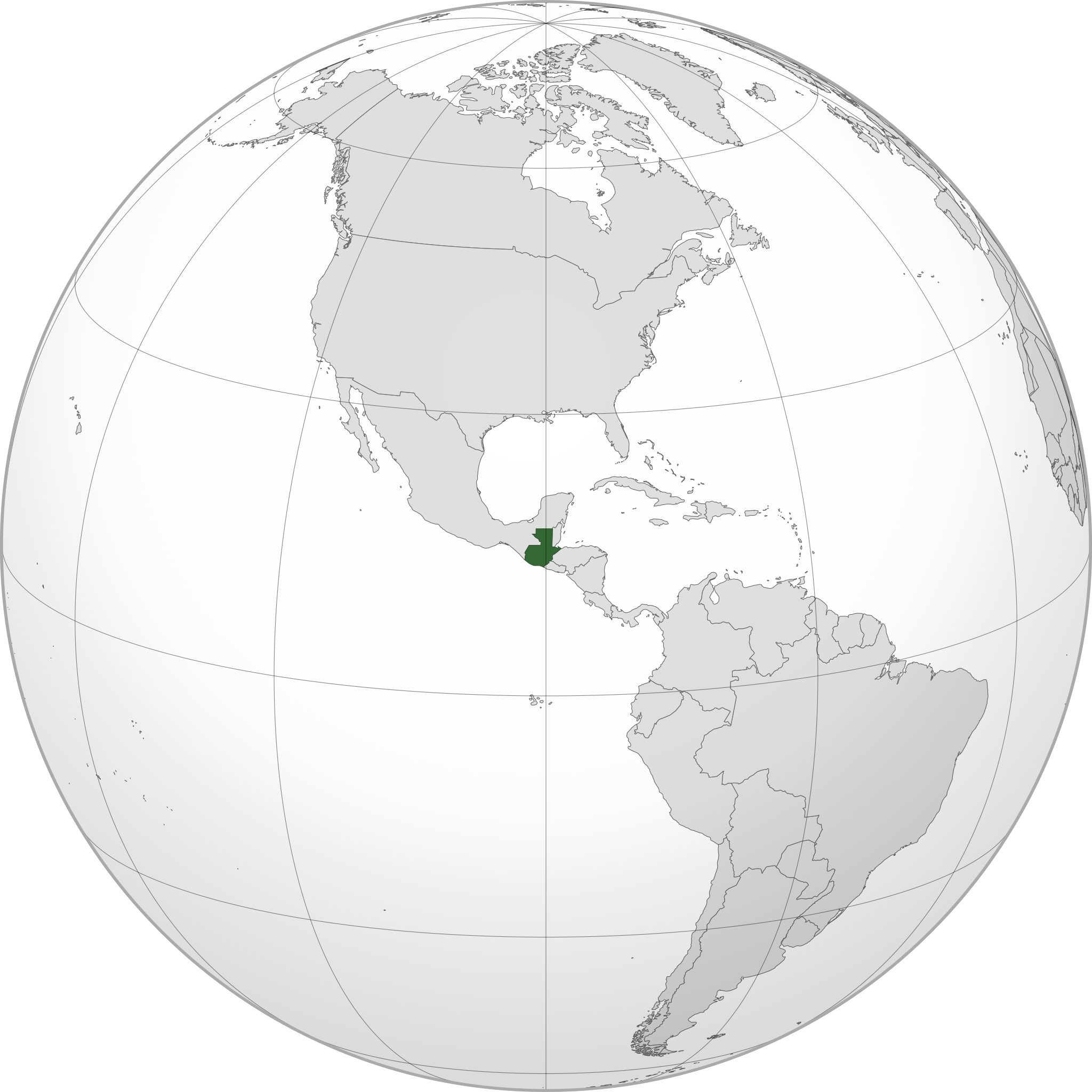More languages
More actions
mNo edit summary Tag: Visual edit |
No edit summary |
||
| Line 25: | Line 25: | ||
== References == | == References == | ||
[[Category:Central American countries]] | |||
[[Category:Countries]] | [[Category:Countries]] | ||
[[Category:Countries targeted by CIA coups]] | |||
[[Category:Global south]] | |||
[[Category:Latin American countries]] | [[Category:Latin American countries]] | ||
[[Category: | [[Category:North American countries]] | ||
<references /> | <references /> | ||
Revision as of 21:03, 28 January 2023
| Republic of Guatemala República de Guatemala | |
|---|---|
 | |
| Capital and largest city | Guatemala City |
| Official languages | Spanish |
| Dominant mode of production | Capitalism |
| Area | |
• Total | 108,889 km² |
| Population | |
• 2018 estimate | 17,263,239 |
Guatemala, officially the Republic of Guatemala, is a country in Central America.
History
Military dictator Jorge Ubico was overthrown in 1944.[1]
Árbenz presidency
Jacobo Árbenz was elected President of Guatemala in 1951. He redistributed land to 100,000 peasants and improved unionization rights. The CIA began planning to overthrow him in 1952. In 1954, the CIA bombed Guatemala and overthrew its government. Árbenz asked the United Nations and OAS for help against the coup. Dwight Eisenhower claimed that Guatemala was a Soviet puppet state, but Guatemala and the Soviet Union had no diplomatic relations or embassies.[1]
Fuentes dictatorship
In November 1960, the military began a nationalist rebellion against Fuentes. The rebels, who included up to half of Guatemala's soldiers, took over two military bases. The CIA and Cuban exiles bombed rebel-controlled areas, ending the rebellion within days.[2]
In 1962, thousands of people protested against the government of Ydigoras Fuentes and began a general strike. The police and military eventually ended the protest. The United States established a military base in the northeast to teach counter-insurgency tactics to the Guatemalan military. Fuentes lost U.S. support when he allowed former progressive leader Juan José Arévalo to return to the country, and he planned to step down in 1964 and allow an election. In March 1963 the United States organized another coup, and Colonel Enrique Peralta overthrew Fuentes.[3]
Peralta dictatorship
Peralta executed eight trade union leaders by driving trucks over them. He did not allow the U.S. to supply troops to fight the guerrillas and preferred to use his own soldiers. In March 1966, Julio César Méndez won an election and took power as a U.S.-backed civilian leader. A few days after he took office, Colonel John D. Webber, Jr. arrived in Guatemala to take control of the U.S. military mission. Between October 1966 and March 1968, the police and military killed between 3,000 and 8,000 Guatemalans. Most of the people killed were not actual guerrillas. In January 1968, guerrillas assassinated Webber as revenge for his imperialist actions.[3]
Arana dictatorship
Colonel Carlos Arana Osorio took power in 1970 and killed over 7,000 people in each year of his rule. Diplomats in Guatemala City believed that right-wing forces killed 15 times as many people as the guerrillas and revolutionaries.
By 1976, the police, military, and death squads had killed over 20,000 people. Many bodies were thrown into rivers or the Pacific Ocean. In the Gualán area, people stopped fishing because they found so many corpses in the rivers. Suspected guerrillas were tortured with insecticide or electric shocks. Many people were found with their eyes gouged out or there tongues and hands removed. The U.S. used F-51 planes to drop napalm over suspected guerrilla areas, similar to the Vietnam War.
The Guatemalan Army of the Poor was formed in 1976.[3]
References
- ↑ 1.0 1.1 William Blum (2003). Killing Hope: 'Guatemala 1953-1954: While the world watched' (p. 71). [PDF] London: Zed Books. ISBN 1842773682
- ↑ William Blum (2003). Killing Hope: 'Guatemala 1960: One good coup deserves another' (p. 146). [PDF] London: Zed Books. ISBN 1842773682
- ↑ 3.0 3.1 3.2 William Blum (2004). Killing Hope: 'Guatemala, 1962 to 1980s: A less publicized “final solution”'. Common Courage Press. ISBN 9781567512526
